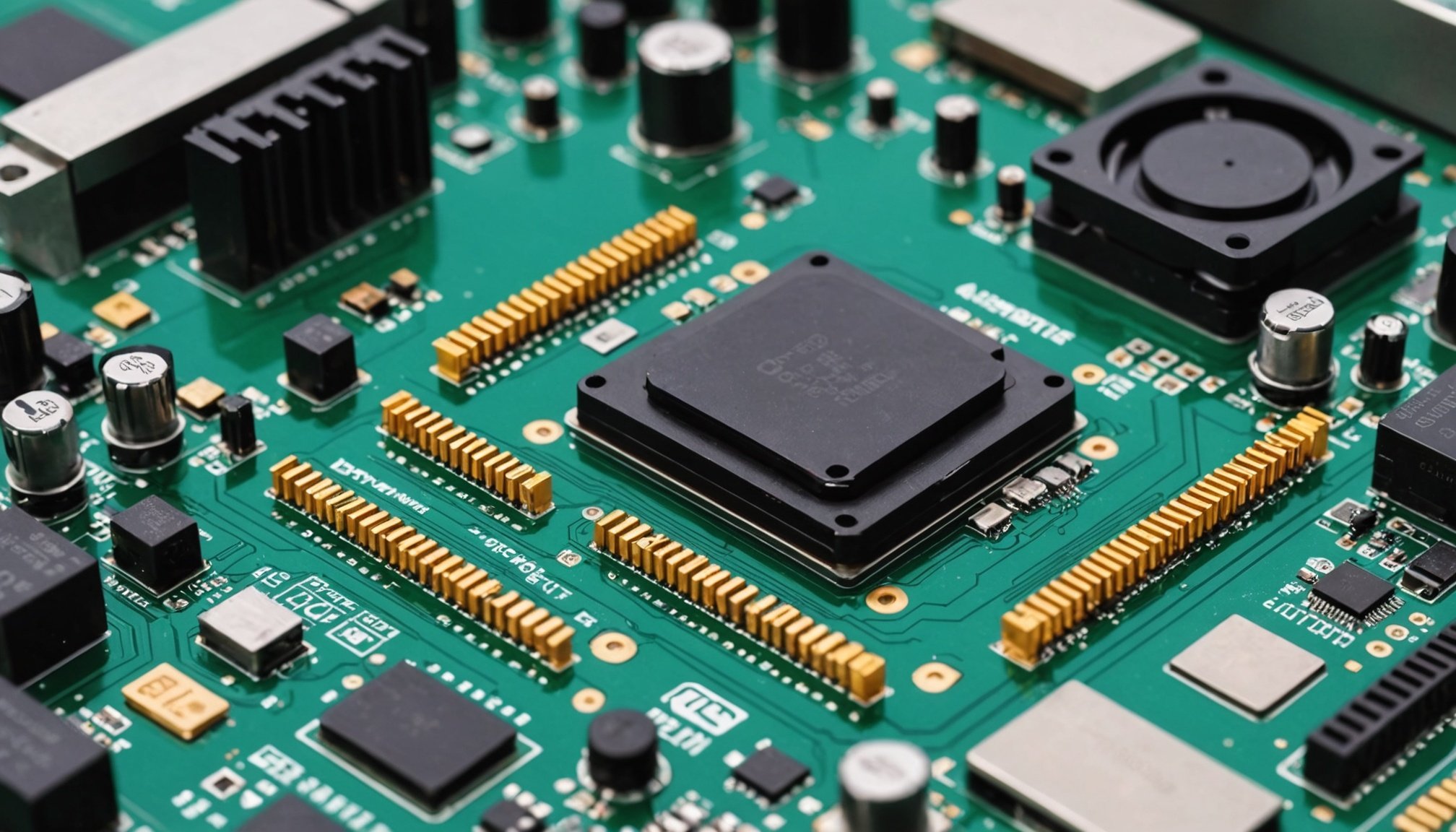The Importance of Hardware Compatibility
Hardware compatibility is critical to achieving optimal system performance. When components like CPUs, GPUs, and RAMs work harmoniously, the system runs efficiently, avoiding potential bottlenecks that might hinder performance. Conversely, performance issues often arise when incompatible hardware is forced together, resulting in poor performance or system instability.
Common conflicts in hardware arise from component matching errors. These include mismatches in socket types between processors and motherboards, or frequency disparities in RAM modules that can lead to underutilization of resources. Ensuring compatibility before purchase is much like preventative maintenance; it saves time and resources in the long run by avoiding potential compatibility pitfalls.
Also to read : Battle of the pixels: integrated graphics vs. dedicated gpus in gaming performance
The benefits of making informed compatibility choices are manifold. Not only do compatible components work more reliably, but they also extend the system’s lifespan and improve user satisfaction. For tech enthusiasts and everyday users alike, understanding and verifying hardware compatibility can transform the computing experience, making it smooth, efficient, and problem-free. Thus, it is essential to prioritize hardware compatibility in any system build or upgrade journey.
Key Specifications to Consider
Understanding how hardware specifications impact the functionality of your system is vital for selecting compatible components. The chipset plays a fundamental role in ensuring your CPU, GPU, and RAM work seamlessly together. The chipset determines compatibility by providing the necessary interfaces and bandwidth for these components.
In parallel : Top gaming keyboard features for peak performance: what to consider?
When examining CPUs, focus on socket type and power requirements. For GPUs, ensure the graphics card is compatible with the motherboard’s PCIe slots and power supply. With RAM, matching frequency and latency is crucial. For example, if the motherboard supports 3200 MHz, but the RAM is only 2400 MHz, the system won’t reach its maximum potential. Likewise, mismatched latency timings can lead to performance issues and system instability.
Consider these elements carefully, as they directly influence your system’s capability and efficiency. Keeping an eye on hardware compatibility ensures you are making informed decisions that prevent bottlenecks and performance issues in the future.
Manufacturer Guidelines and Recommendations
When it comes to maintaining hardware compatibility, leveraging manufacturer advice is key. Many manufacturers provide compatibility lists that detail which components work optimally together. These lists offer a foundational guide to ensuring smooth operation and avoiding mismatched parts.
Consulting product documentation is essential during upgrades. These documents outline specific component requirements and potential compatibility issues, helping buyers make informed decisions. For instance, several reputable manufacturers, such as ASUS and MSI, provide detailed compatibility resources online. These resources help users match CPUs, GPUs, and RAM effectively, ensuring they operate within the system’s capacity.
Following manufacturer guidelines can simplify the complexity of component matching, reducing the risk of performance issues. By adhering to these recommendations, users can stay ahead of potential hardware complications. This proactive approach can significantly improve the lifespan and reliability of a system, keeping performance issues at bay. Always remember: an informed approach to hardware upgrades leads to a more satisfying and efficient computing experience.
Tools and Resources for Compatibility Checks
When ensuring hardware compatibility, leveraging the right tools significantly eases the process. Popular online resources and compatibility tools provide essential guidance for verifying component suitability. These platforms allow users to input hardware specifications and receive instant feedback on potential performance issues or mismatches.
Hardware checking software offers additional support by analysing your system’s existing components and suggesting compatible upgrades. Tools like PCPartPicker and Speccy are widely used for their user-friendly interfaces and reliability in identifying compatibility pitfalls. Users may also find community forums invaluable; these spaces are rich with advice from enthusiasts and professionals alike. Sharing experiences and solutions can often illuminate potential purchase mistakes and guide more informed decisions.
Additionally, online resources hosted by manufacturers can furnish compatibility lists and product documentation. These serve as definitive guides, ensuring your system components work harmoniously. By utilising these tools and community insights, you can prevent common error identification issues, achieving a more efficient upgrade path and prolonging your system’s longevity.
Common Pitfalls to Avoid
When dealing with hardware compatibility, avoiding potential pitfalls can save you from costly errors. One frequent mistake is mismatching sockets, commonly seen with CPUs and motherboards. Compatibility pitfalls also arise from neglecting to verify power supply ratings against GPU needs, leading to performance throttling or failure to boot. Purchase mistakes like these can occur if not careful.
Error identification is essential before finalising your purchase. Double-check the specific model numbers and specifications to ensure every component aligns perfectly. Neglecting compatibility may result in reduced system performance or even irreparable damage. A typical error involves incorrect RAM frequency, which can bottleneck the system, preventing it from performing optimally.
Double-check all specifications diligently before buying. Ensure your build or upgrade includes components that operate harmoniously, thereby avoiding unexpected interruptions. Understanding these pitfalls and addressing compatibility proactively ensures a seamless setup that supports your computing needs effectively. By taking these precautions, you prepare yourself for an efficient and error-free hardware experience.
Practical Examples and Case Studies
Understanding how hardware compatibility impacts real-world scenarios can be enlightening. Real-world examples offer valuable insights into successful hardware configurations. Consider a gaming PC build where the component matching was thoughtfully executed, resulting in peak performance. The incorporation of a compatible CPU, alongside a GPU and RAM preferred by the chipset, illustrates a seamless setup.
In contrast, case studies show the potential challenges of neglecting compatibility. One example involves a mismatched motherboard and RAM, which led to performance issues. Realistic solutions, such as selecting components from a compatibility list, resolved these issues efficiently. Analysing these situations provides practical lessons in avoiding common compatibility pitfalls.
Diagrams and charts can aid comprehension, clearly illustrating compatible versus incompatible setups. Visual aids, along with build guides, are particularly helpful for enthusiasts seeking to understand successful configurations. They demonstrate the necessity of confirming hardware compatibility before finalising any purchase. By examining these scenarios, beginners and pros alike gain an informed perspective on creating reliable systems.
Conclusion
Confirming compatibility is a crucial step in achieving a seamless system upgrade or build. Well-researched decisions help avoid potential performance issues and extend the life of your hardware. Always refer to comprehensive hardware guidance to validate that all components co-operate effectively. By conducting thorough research prior to any purchase, the risk of encountering compatibility pitfalls diminishes significantly.
Take advantage of detailed product documentation and engage with community forums to access experiential advice. These resources are invaluable in guiding you through the intricacies of component selection. For long-term success, consistent compatibility confirmation is key, even during future upgrades.
Investing time in understanding and maintaining hardware compatibility ensures your system runs optimally and achieves the desired performance outcomes. Keep these principles in mind to support a successful upgrade path and a rewarding computing experience.






